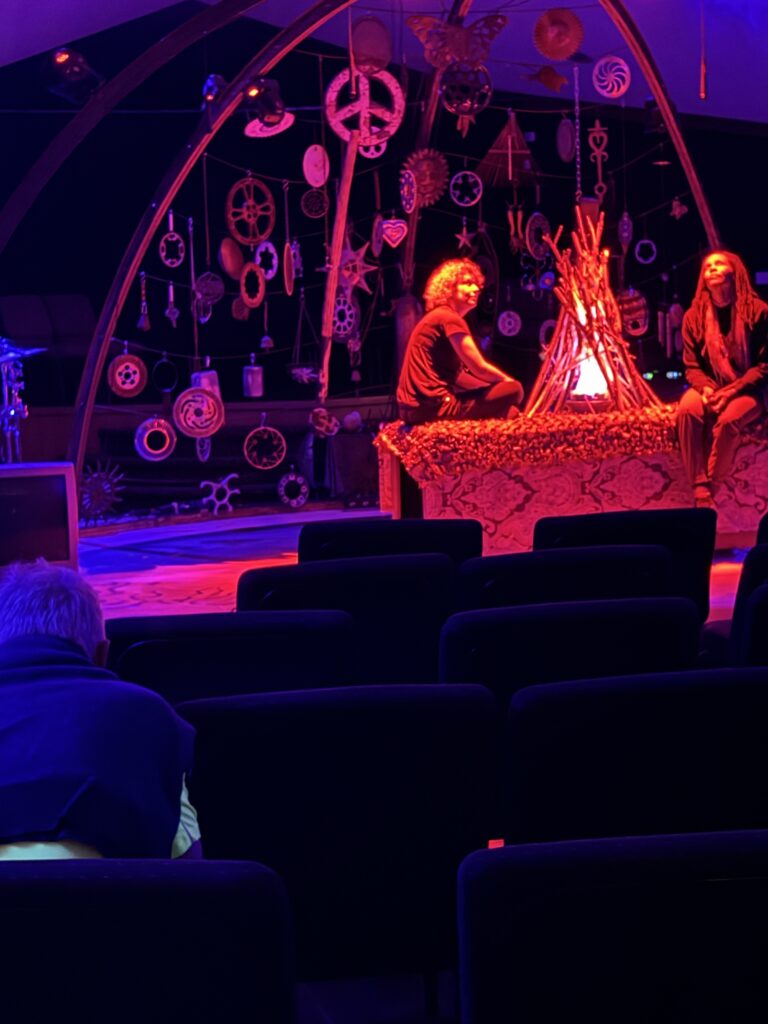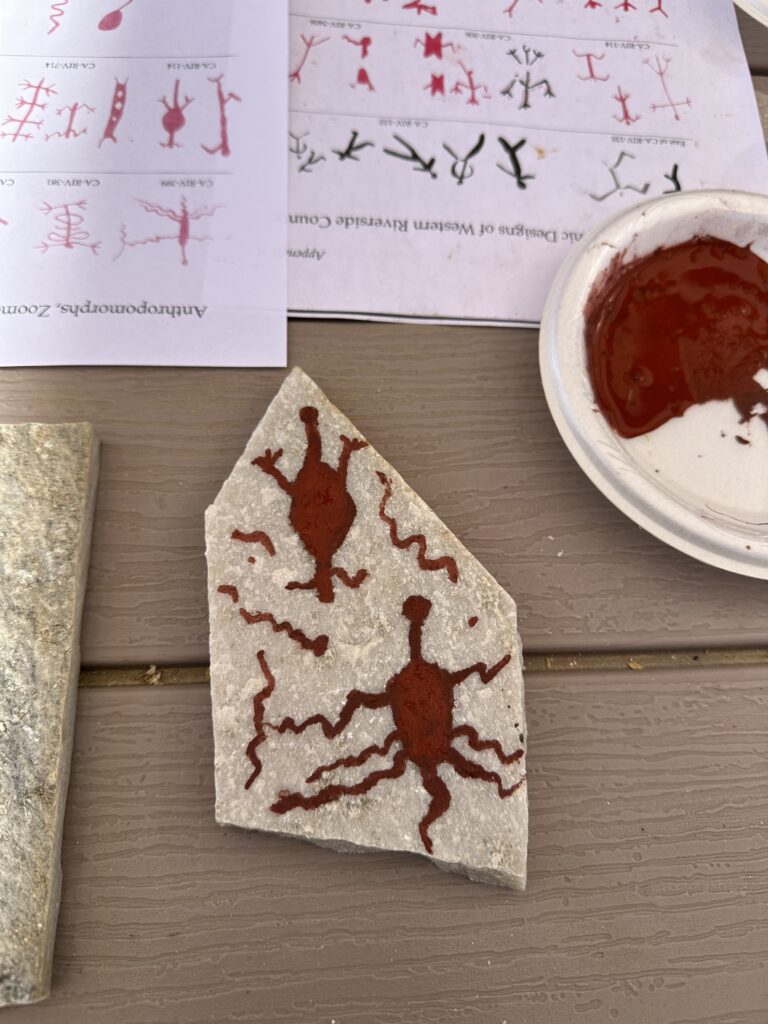New Narratives for Stronger Communities
Turning Trauma Into Connection Through Myth Making and Storytelling
Myths are symbolic narratives that encapsulate cultural beliefs, values, and understandings of the world. They transcend literal truth to convey deeper meanings about human experience, social norms, and the nature of reality. As vehicles for collective wisdom, myths offer guidance and lessons across generations, shaping and preserving our identity.
Born through a process of mythopoesis, the inaugural Tapestries of Transformation program utilized narrative and storytelling to address isolation and other contemporary issues. The final performance gave voice to the shared values and experiences of all who participated in the program. It commenced in a moving demonstration of our connectedness as the entire audience participated in the literal weaving of a new tapestry.
Tapestries of Transformation offers participants a powerful way to examine, challenge and re-create the stories underpinning their lives.
Bringing Military Members and Community Together to Create the Story We All Need
Many veterans become disillusioned after leaving the service, finding a fractured and highly individualistic world. Trauma that hasn’t fully healed can frustrate efforts to integrate into civilian life.
At the same time, isolation and trauma are conditions that have been increasingly impacting the lives of all citizens. Veterans, many of whom have had to confront trauma head on, are uniquely positioned to help community members move through their own healing.
Through inclusive dialogue, shared projects, and creative expression, Tapestries of Transformation brings veterans and community members together to create new myths that address their shared experiences and values. These myths when communicated through performance foster community and mutual understanding.

Deciphering Values, Heroes, and Villains: New Characters for the Modern World.
Values are like puzzle pieces that come together to tell a story and establish a new paradigm for being in the world.
The Tapestries of Transformation inquiry began with the question: Who should our heroes be? Certainly not those who promote extreme individualism and isolation.
From this understanding, program participants and the creative team developed characters from shared values as well as the threats to those values.
We identified the following villains and heroes.
- Villains: Nihilism, ambivalence, prejudice, denial, blame, isolation, alienation.
- Heroes: Love, empathy, mutual recognition, collaboration.
New Myths Explored in Tapestry
- A creation myth: The world as a tapestry woven from diverse experiences and backgrounds, where each thread represents the individual stories and contributions of veterans and civilians, strengthening the fabric of the community.
- A healing myth: Veterans and their communities come together to overcome adversity, using their collective strength and wisdom to create a brighter, more resilient future.
- A heroism myth: Emphasizing collaboration, empathy, and shared values in building a harmonious and interconnected society.
Why Work With Myth
Carl Jung believed that myths and dreams express the collective unconscious, reflecting core ideas that are part of humanity as a whole. They convey wisdom encoded in humans, possibly through evolution or spiritual processes.
Key aspects of a mythopoetic process include:
- Myth-Making: Creating new myths that resonate with current societal contexts and personal experiences, serving as symbolic stories that convey deeper truths and values.
- Symbolic Expression: Using symbols and metaphors to communicate complex ideas and emotions.
- Collective Unconscious: Recognizing that myths emerge from the collective unconscious, expressing universal themes and archetypes that resonate with the broader human experience.
- Community and Personal Healing: Engaging in the creation and sharing of myths to find meaning, foster connections, and promote healing.
- Ritual and Performance: Including rituals, storytelling, and performances that bring myths to life, making symbolic narratives tangible and impactful.
- Inclusive Dialogue and Collaboration: Emphasizing collaborative storytelling, where diverse voices and perspectives create myths that reflect shared values and address common challenges.
- Transformation and Reframing: Transforming existing narratives to create new paradigms and ways of being in the world.


